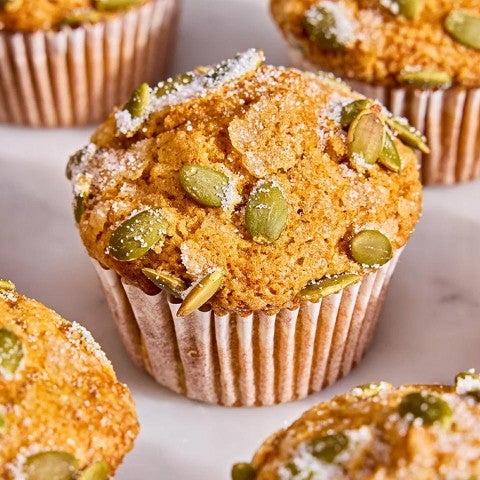-
To make the preferment: For best results, weigh your flours; this miche recipe was developed by metric weight. However, if you prefer to work with volume measurements, please be sure to measure your flour the King Arthur way: gently spoon the flour(s) into a cup, then sweep off any excess.
-
In a medium bowl, mix together all the preferment ingredients.
-
Cover the bowl and set aside to rest at room temperature for 12 to 16 hours; overnight works well.
-
To make the dough: Weigh your flour; or measure it by gently spooning it into a cup, then sweeping off any excess.
-
In a large bowl, mix the dough ingredients together until thoroughly combined and homogeneous.
-
Cover the bowl and allow the dough to rest for 30 minutes.
-
To do a bowl fold: Use your wet hand to grab a section of dough from one side, lift it up, then press it down firmly into the middle. Repeat this eight to 12 times.
-
Cover the bowl and allow the dough to rest for 30 minutes.
-
Repeat the bowl fold. Cover the bowl and allow the dough to rest for 30 minutes.
-
To do a coil fold: With wet hands, reach under the dough, stretching the middle upward until the dough releases from the container. Roll it forward off your hands, allowing it to coil on itself. Rotate the container 90° (a quarter turn) and repeat.
-
Cover the bowl and allow the dough to rest for 30 minutes.
-
Repeat the coil fold. Cover the bowl and allow the dough to rest for 1 hour to 1 1/2 hours.
-
To preshape the dough: Turn the dough out onto a lightly floured surface and gently form it into a rough round. If you’re making two loaves, divide the dough in half and shape two rough rounds. Cover and let rest for 10 minutes.
-
To shape the dough: For one large loaf, gently shape the dough into a smooth round and place seam-side up in a pie pan lined with a well-floured smooth cotton towel, like a flour sack towel. A smooth cotton apron will also work. For best results, use whole rye or whole wheat flour to dust the cloth.
-
For two smaller loaves, shape the dough as directed above, but place each round in a standard (9") brotform or lined brotform. If you don’t have brotformen, use a couple of small bowls (about 9" top diameter) lined with well-floured smooth cloths.
-
Cover the bread and allow it to rest at room temperature for 60 to 75 minutes.
-
While the bread is resting, preheat the oven to 475°F with a baking stone or steel placed on a middle rack. Allow the oven to preheat for about 1 hour to ensure it’s thoroughly heated.
-
To add steam to your oven: While the oven is preheating, place an empty cast iron skillet on the oven rack below the stone or steel. If possible, adjust the stone and pan so that the skillet isn't directly under the stone, making it easier for steam to reach the baking bread.
-
When the bread is proofed and feels light, almost marshmallowy, and a small impression remains when pressed with a finger, invert it onto a sheet of parchment and allow it to rest for 15 minutes.
-
Use a baker’s lame or razor blade to make a few swift slashes on the top of the loaf to score it in the pattern of your choice.
-
To bake the bread: Place the loaf or loaves in the oven on the stone or steel and pour about 1 cup of warm water into the skillet. Steam will billow from the pan upward to envelop the bread; be sure to wear good oven mitts to shield your hands and arms. Quickly close the oven door to trap the steam.
-
Bake the single large loaf for 20 minutes, then reduce the heat to 450°F. Bake for another 30 minutes, then turn off the oven, leaving the loaf inside. If you’re making two loaves, bake for 15 minutes, then reduce the heat and bake for an additional 20 to 25 minutes before turning the oven off.
-
Allow the bread to rest in the oven for an additional 30 minutes, monitoring it so that it takes on as much additional color as you like.
-
Remove the bread from the oven. Cool fully before slicing.
-
Storage information: Wrap the bread loosely and store it at room temperature for up to a week; freeze for longer storage.





















